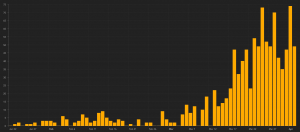Singapore — While Singapore, along with South Korea and Taiwan, has been cited as an example of how to manage the Covid-19 crisis in order to prevent a widespread outbreak, the number of its cases rose from only 100 to 1,000 in just one month, from the end of February to the end of March. On April 1 (Wednesday), it saw its biggest jump in 24 hours, with 74 new confirmed cases.
Diligent contact tracing, isolation and quarantine of suspected Covid-19 patients, and one of the highest testing rates in the world, proved to be the elements that brought Singapore early success in the fight against the coronavirus outbreak.
So, why the tenfold jump in the number of Singapore cases?
In early March, analysts were already saying that places in Asia that had seemingly overcome the outbreak, such as Hong Kong, South Korea and Singapore, needed to get ready for a possible “second wave” of infections as Covid-19 cases increased in Europe and later in the United States.

Singapore had a second wave of cases when overseas Singaporeans, who number around 200,000, started returning as more countries announced lockdown measures and because of looming travel restrictions.
Those returning included students taking part in exchange programmes or enrolled in universities overseas, especially in the United Kingdom and the United States.
Secondly, as noted by scmp.com on Friday (April 3), the second wave of infections also saw new cases that had been locally transmitted, as well as those that were unlinked to other cases.
At the end of February, there were six coronavirus clusters in Singapore but, by the beginning of April, the number had increased to 20, including a nursing home and a shipyard.
However, the number of cases in Singapore should be seen in light of the number of cases globally. The tenfold increase in the country mirrors the trend worldwide.
And while Singapore has recently implemented more stringent measures in public distancing, scmp.com reports that, even with its aggressive approach, experts are concerned that the country’s numbers have continued to rise.
Some attribute this to the public not being strict enough in following social distancing, with less than half of those working in the Central Business District following work from home schemes. In response, officials have asked firms to put telecommuting programmes in place.
The scmp.com report quotes Dr Leong Hoe Nam, an infectious disease specialist, as saying that Singaporeans need to be more “aggressive” with safe distancing.
He said: “There is not enough, currently, to break the epidemic. Rather, the epidemic is breaking us because of the lack of will on the part of the citizens.”
Furthermore, it also quotes the dean of the National University of Singapore’s Saw Swee Hock School of Public Health, Professor Teo Yik Ying, as saying that if people in Singapore refuse to “follow simple instructions, then no matter what the government puts in place, we will see an uncontrollable outbreak”.
Strictly following social distancing rules is even more important as new research from Singapore is showing that some Covid-19 infections may be started by people who show no symptoms of the disease at all. As many as one out of 10 new infections may be spread this way.
The research from Singapore was published on Wednesday (April 1), and is just one among several studies showing similar results — that approximately 10 per cent of new coronavirus infections are because of people who are infected with the virus but do not show any signs of illness. /TISG

